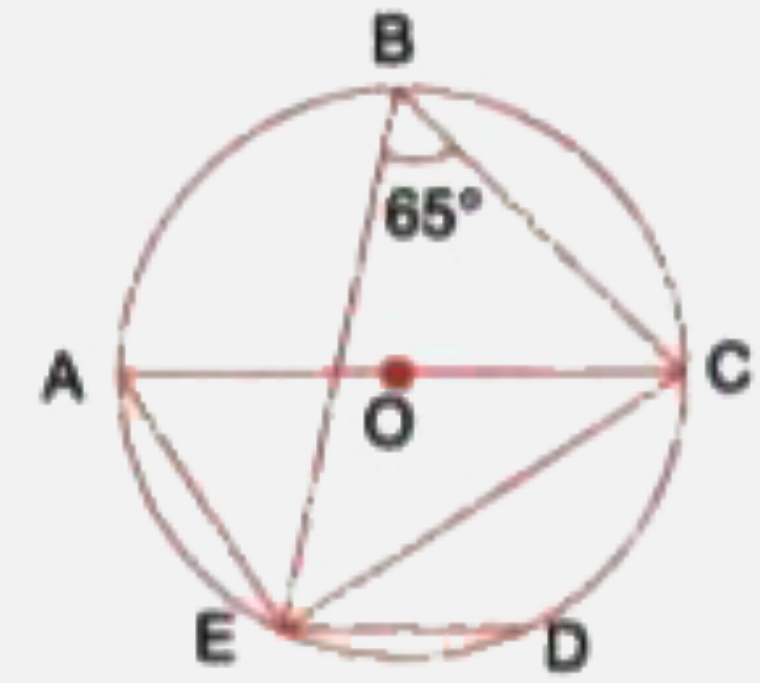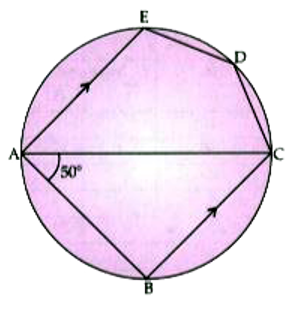The figure alongside shows a circle with centre 0. Chord ED is parallel to diameter AC and angle Find angle CED.

Step by step video & image solution for The figure alongside shows a circle with centre 0. Chord ED is parallel to diameter AC and angle CBE = 65^(@). Find angle CED. by Maths experts to help you in doubts & scoring excellent marks in Class 10 exams.
Updated on:21/07/2023Topper's Solved these Questions
Similar Questions
In the given figures, chord ED is parallel to diameter AC of the circle . Given ∠CBE=65∘ calculate ∠DEC

View SolutionThe given figure shows a circle with centre O such that chord RS is parallel to chord QT, angle PRT=20∘ and angle POQ=100∘ calculate
(i) angle QTR
(ii) angle QRP
(iii) angle QRS
(iv) angle STR

View SolutionIn the given figure , AD is a diameter O is the centre of the circle AD is parallel to BC and ∠CBD=32∘
(i) ∠OBD
(ii )∠AOB
(iii) ∠BED

View SolutionIn Figure, chord ED is parallel to the diameter AC of the circle. Given ∠CBE=65∘, calculate ∠DEC.
View SolutionThe figure given below, shows a circle with centre O.
Given :∠AOC=aand∠ABC=b
Find the relationship between a and b.
(ii) Find the measure of angle OAB ,if OABC is a parallelogram

View SolutionIn the figure AB is the chord of a circle with centre O and DOC is a line segment such that BC=DO. If ∠C=20∘, find angle AOD.

View SolutionThe figure, given below, shows a pentagon ABCDE with sides AB and ED parallel to each other, and ∠B:∠C:∠D=5:6:7.
(i) Using formula, find the sum of interior angles of the pentagon
(ii) Write the value of ∠A+∠E.
(iii) Find angles B,C and D
View SolutionThe given figure shows a semi circle with centre O ane diameter PQ. If PA=AB and ∠BCQ=140∘ find measures of angles PAB and AQB. Also, show that AO is parallel to BQ.

View SolutionIn the given figure, ABCDE is a pentagon inscribed in a circle such that AC is a diameter and side BC||AE. If BAC = 50∘,Find angle CDE

View SolutionIn the given figure, ABCDE is a pentagon inscribed in a circle such that AC is a diameter and side BC||AE. If BAC = 50∘,Find angle BCA

View Solution
